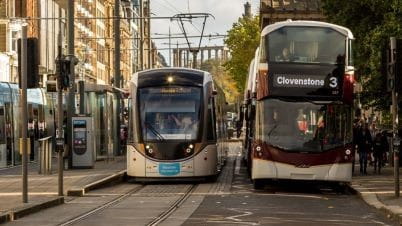In a world of cyberthreats, transportation operators are re-thinking security strategies and adopting new methods for securing access to networks.

Cybersecurity risks are a reality for all of us, every day, everywhere, in just about everything we do, including transporting goods and people. It’s a reality on our commute to work, as we travel on trains, buses and planes, and it’s a reality for the journey that our food makes from farm to table, as well as the packages that are conveniently dropped off at our doors.
Every connection, every hand-off along the way comes with a cybersecurity risk ― at some level. And with each connected system and subsystem, and the introduction of new technologies into transportation networks, the need for robust cybersecurity measures increases. That said, cybersecurity risks should not stop transportation organisations from taking full advantage of today’s faster, smarter and greener operations.
Re-thinking network security
The sheer volume of goods and people, and an unprecedented influx of devices are driving transportation organisations to re-evaluate how they address network security to deal with the way the world works today. We are all familiar with security strategies based on organisational structure and departments such as finance, sales, R&D, and human resources. This type of segmentation strategy is no longer enough as people now work from anywhere and no departmental system is considered safer than another.
In addition to the people side of segmentation and access, transportation operators need to think about a single management system that provides a cohesive view across all wired and wireless network resources to ensure full visibility and control over all network resources.
A new security model
Transportation operators may be specialists in their industry, however, they may not be experts in network security. Working with an experienced partner can provide the expertise necessary to develop and deploy the right model for their network.
A zero trust approach to network security safeguards the organisations’ resources, rather than the network itself, by focusing on protecting access to the resources.
The way zero trust network security works is that it assumes attackers are already present and always ready to strike. There is no implicit trust ― no waiting around for a breach and then responding. It applies multiple layers of security protection equally to every internal and external person, system, subsystem, application, and device that attempts to access the network. Access is strictly limited to the resources that are needed when the request is made. Additionally, all network resources are continuously scanned for unusual or malicious activities.
Five steps to zero trust
While every transportation operator’s cybersecurity requirements are unique, a five-step methodology can help them assess and implement the zero trust security measures that make the most sense for their organisation. These include:
- Monitoring: Identify all data types, applications, assets, and network services that need to be protected.
- Validating: Assess the way data flows onto, through and off the network, including cloud environments as well as the way network resources interact.
- Planning: Architect and segment the network around the data types, applications, assets and network services that need to be protected.
- Simulating: Develop and test the policies to verify they appropriately consider and protect all network resources.
- Enforcing: Continuously monitor the environment to detect policy violations, apply remediation and discover opportunities to strengthen the policy.
A trusted partner in a changing world
Alcatel-Lucent Enterprise is involved in some of the most innovative initiatives in the transportation industry globally, including state-wide Intelligent Transportation Systems (ITS) implementations in North America and internationally acclaimed rail initiatives in Europe.
ALE cutting-edge, multi-service, multi-modal network solutions include ruggedised switches in the backbone network, stackable switches at the network core and SPB technology, all with built-in security mechanisms. They support an exponentially increasing number of sensors, cameras and IoT devices to securely deliver passengers and goods where they need to be, when they need to be there.
To learn more about ALE security strategies and solutions for the transportation industry, download our white paper: Smarter, greener, more secure transportation through digital transportation.
Latest Blogs

The SaaS Advantage for Hotels and Hospitality Communication…
Modern hospitality communications platforms deliver flexibility, cost optimization and exceptional guest experiences.

Your Communications System: A Brake or an Accelerator?
A modernized platform empowers enterprises to optimize operations and drive continuous performance.

Smart Manufacturing Solutions: The Future of Connected Fact…
Smart manufacturing solutions enable connected factories through reliable, intelligent network connectivity that powers automation and efficiency.

Improving Collaboration in Multimodal Transport
Rainbow transforms how companies, staff and passengers operate and connect in public multimodal transport systems.





